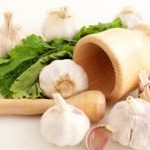If you’re a self-dubbed pyro-gourmaniac (people that love spicy food), then you probably already have a good appreciation for the habanero pepper. Rated one of the hottest peppers on the Scoville chart, this spicy, citrusy fruit continues to grow in popularity. And, not surprisingly, this little pepper is more than just a way to heat up a dish. Habaneros also have a number of great health benefits as well.
Habaneros are high in Vitamin C. In fact, according to the book, “75 Exciting Vegetables for Your Garden” a habanero pepper can have as much as six times the vitamin C found in an orange! For the most Vitamin C content, look for the green unripened peppers. According to WebMD, adding habaneros to your diet may provide many of the benefits attributed to vitamin C including, “protection against immune system deficiencies, cardiovascular disease, prenatal health problems, eye disease, and even skin wrinkling.”
Habanero for Cold & Respiratory Issues
The habanero pepper is also credited with helping relieve some cold symptoms, particularly respiratory issues. The pepper is reported to help clear out the sinuses and congested mucus membranes in the nose and lungs. It also creates a sweat effect which can help aid your body in eliminating toxins. It has demonstrated antibacterial activity against microbes such as Streptococcus mutans, not to mention inhibitory activity against both yeast and Candida infections. And it is considered an antioxidant which can help repair damage from free radicals. These are a few of the reasons you’ll find this pepper as an ingredient in Jon Barron’s Super ViraGon formula.
While these health benefits are significant, the main health benefit from these peppers can be attributed to the compound that gives them their spicy kick, capsaicin. When it comes to peppers, a study published in the “Journal of Environmental Science and Health” found that habanero peppers have the highest concentrations of capsaicin when compared to other peppers from their genus. So why does this matter?
Habanero as a Natural Cancer Treatment?
Besides indicating the “spiciness” of a pepper, capsaicin also has as number of health benefits. Capsaicin is constantly being studied for its effectiveness in cancer treatments. According to the Memorial Sloan Kettering Cancer Center, “capsaicin has demonstrated chemopreventive and antiproliferative effects against various cell lines including breast, bladder, and prostate cancer cells.”
Habanero Weight Loss Benefits
Capsaicin is also credited with helping weight loss. Capsaicin increases thermogenesis, a process where your body raises its temperature. This process can increase your metabolism, which forces fat cells to be used as energy. In addition, this compound is credited with helping you feel full longer and decreasing your appetite for sugary and fatty foods. It is also a low-calorie, low-sodium food.
Habanero Diabetes & Heart Health Benefits
Capsaicin may also help treat diabetes and promote heart health. Studies have shown that it may help lower cholesterol and blood pressure levels as well. A study published in the “American Journal of Clinical Nutrition” found that capsaicin appears to regulate insulin levels following a meal, especially for study subjects who were overweight.
Habanero Pain & Arthritis Relief and More!
If all these benefits weren’t enough, capsaicin is a well-known ingredient in many topical pain relief and arthritis treatments – and for good reason. Studies have shown that capsaicin can:
- improve circulation in the hands and feet
- relieve nerve pain
- relieve muscle pain and muscle spasms
- treat osteoarthritis and rheumatoid arthritis
Capsaicin is considered to have anti-inflammatory properties since it inhibits the production of Substance P, a compound that is responsible for the swelling and pain associated with inflammation. Because of this, it is used to help treat psoriasis and headaches.
How to Use Habaneros
Luckily, habaneros are a rather easily obtainable fruit and are fairly simple to add to your diet. If the spice is too much for you, you can tame the heat levels somewhat by removing the seeds and veins and cooking the fruit. However, it only takes a small amount to receive the nutritional benefit of this pepper and can easily be incorporated into your menu in salads, soups, salsas, and other dishes.









Habaneros
Laboratory studies are not the same as eating it daily. Mexicans have bad health in general – they have high rates of various chronic diseases, including cancer and diabetes etc. One workmate said to me one day that his mother was very ill, dying, blood coming out of her nose I asked, what illness does she have? He said: she is old — 67. I’d pass on the habanero, especially when my immediate ancestors lived in cold climates and never used it.
.
Habenero
You must look at the entire diet not just one item. Obviously if you add a healthy item to a healthy diet it will be a benifit as listed above. More C, how can that be bad? The Mexican diet has gone downhill just like the U.S. diet. Lots of white flour tortillas instead of whole grain non gmo corn, etc. Don’t eliminate a healthy food item just because you know an unhealthy Mexican.
LOL
To say such a thing is the reason why there is so much useless disinformation out there. I would be willing to bet that your acquaintance’s mother, despite having poor health, is better off eating hot peppers of any type than if she never consumed any. Increasing circulation, getting added vitamins and carotenoids, and all the myriad benefits that we know come from hot peppers (of all types) does not hurt anyone. Some may not be able to stomach the intensity, but that doesn’t mean a pepper causes bad health. Sorry. And for the timid, cayenne capsules can still give you the benefits.
I have amazing health, and I consume boatloads of cayenne, jalapeños, and now that habaneros are in season, I will have plenty.
Not many Mexicans eat their traditional cuisine anymore; I know many who say they prefer the Americanized, processed greasy restaurants over the homemade stuff they came from. American “Mexican” restaurants are a far cry from real Mexican foods and dishes. Same garbage quality just with a Mexican spin on it. There are even Mexican style bakeries (panaderias) which sell nothing but garbage, and the people flock to them. Don’t blame hot peppers, get some perspective.
Reply
That comment makes no sense
Habanero
To say mexicans have bad health and have high chronic illnesses is a bad stereotype. Depending on the region of mexico, poverty and malnutrition starting in childhood and lasting throughout life would be factors as well as a high intake of processed sugar and carbohydrates with poor access to medical care. Might as well say they are all short because of peppers too.
Habanero health benefits
Great information ..
3 years ago I purchased a small habanero pepper plant. It grew 3 habaneros the first year. I take it inside when it falls below
40 degrees. I live in North Dakota. This year I had 3 harvests totaling about 90 pieces of fruit. I use it in most of my cooking..Instead of black pepper…
I even made habanero infused honey/honey butter. Great in chicken soup
The heat only lasts for a couple of seconds
What gets me, is when I use it in sautéed
Food. It makes me hack and cough..lol
habanero heat
They should be used sparingly as the spiciness is very pungent.
Recipes
Remove stems and blend it with a bit of water.
Use twice the amount of sugar as the died habenero.
Cook as a jam…
Delicious.
Good Stuff
Great stuff, if you can handle the heat. I started eating hot peppers at age 18 and loved them. Ive graduated to the ghost peppers, grow them myself, along with these habanaros. At least one a day and I have very few colds, flus, etc, all that stuff. At 63 years old, still heating it up and I love them. At this point, not so hot due to so much past use. I have normal blood pressure, no elevated cholesterol, and really, just fit as a fiddle. Albeit, I keep sodium and sugar out of my diet, and I exercise regularly. Got to do it all folks. Invest in your old age while you are young by living healthy all your life.
Peppers
Hate to tell you but since I lived years in Mexico, the pepin is even hotter than this pepper. It looks like a green pea but is pure fire. I am an odd ball and like it a lot, and next the seranno, but never ever the jalapeno but is good when smoked and is chipotle and great on sandwiches.